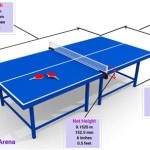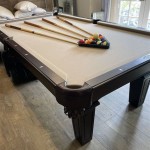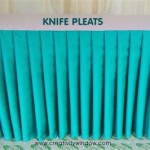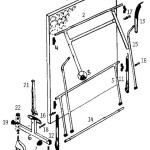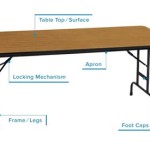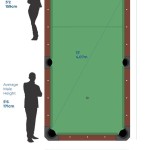Unlocking the Value of Antique Singer Sewing Machine Tables
Singer sewing machine tables, particularly those accompanying antique machines, represent a significant intersection of industrial history, craftsmanship, and decorative arts. Their value is determined by a complex interplay of factors, including the age, model, condition, rarity, ornamentation, and market demand. Accurately assessing the worth of these tables requires a keen understanding of their historical context and the prevailing trends within the antiques market.
These tables were initially designed as functional companions to the revolutionary Singer sewing machines that transformed the garment industry and domestic life in the 19th and 20th centuries. Beyond their utilitarian purpose, however, they often incorporated aesthetic elements that reflected the prevailing design sensibilities of their respective eras. From the ornate cast-iron bases of Victorian-era tables to the streamlined wooden cabinets of mid-century models, each table embodies a unique aesthetic that contributes to its desirability among collectors.
The identification and valuation process necessitates careful examination and research. A thorough assessment involves scrutinizing markings, construction techniques, and design characteristics. Comparable sales data from reputable auction houses, antique dealers, and online marketplaces can provide further insights into current market values. Ultimately, understanding the nuances of these tables is crucial for both owners seeking to sell and collectors looking to acquire a piece of history.
Key Point 1: Factors Influencing the Value of Singer Sewing Machine Tables
Several key elements contribute to the overall value of an antique Singer sewing machine table. Understanding these factors is essential for accurately determining its worth. The primary considerations are age and model rarity, condition, ornamentation and decorative elements, and provenance.
Age and Model Rarity: The age of the table is a fundamental determinant of its potential value. Generally, older tables, particularly those dating from the late 19th and early 20th centuries, are often more desirable due to their historical significance and relative scarcity. Certain Singer models, especially those produced in limited quantities or featuring unique design elements, command higher prices. Researching the specific model number, often found stamped on the table or accompanying sewing machine, is crucial for determining its rarity and historical context. For example, tables associated with very ornate and early "turtleback" Singer machines are quite valuable.
Condition: The condition of the table significantly impacts its value. Tables in excellent condition, with minimal wear and tear, original finishes, and intact mechanisms, are generally worth more than those with significant damage or restoration. Signs of wear, such as scratches, dents, and fading, are expected on antique pieces, but extensive damage, such as cracks, warping, or missing parts, can substantially reduce the value. Careful cleaning and preservation can enhance the table's aesthetic appeal and contribute to its overall worth. However, it's important to differentiate between cleaning and restoration; excessive or inappropriate restoration can diminish the antique's authenticity and value. A professional assessment is recommended for determining the best course of action for preservation.
Ornamentation and Decorative Elements: The decorative features of the table play a significant role in its desirability. Tables with intricate cast-iron bases, elaborate woodwork, or unique inlay patterns are often more valuable than simpler, more utilitarian models. The presence of original hardware, such as drawer pulls and hinges, also contributes to the table's overall aesthetic appeal and value. The style of ornamentation often reflects the period in which the table was manufactured, ranging from the ornate Victorian style to the Art Deco and Art Nouveau styles. Understanding these stylistic influences can provide valuable insights into the table's provenance and historical context. For instance, highly detailed cast iron work, often featuring floral or geometric designs, is characteristic of earlier models. The presence of original decals or labels in good condition are also valuable indicators.
Provenance: Provenance, the documented history of ownership and origin, can significantly enhance the value of an antique Singer sewing machine table. If the table can be traced back to a notable individual or event, its historical significance and consequently its market value may increase. Documentation such as original purchase receipts, family histories, or exhibition records can substantiate the table's provenance. Even without such documentation, the table's design can often provide clues to its origin and time period. Researching the table's history and any associated manufacturers or retailers can add to its story and its appeal to potential buyers.
Key Point 2: Identifying and Dating Antique Singer Sewing Machine Tables
Accurately identifying and dating an antique Singer sewing machine table is a critical step in determining its value. This process involves examining various features, including model numbers, design characteristics, and construction techniques. The Singer company meticulously documented its products, leaving clues for identification.
Model Numbers and Serial Numbers: Singer sewing machines and their accompanying tables often bear model numbers and serial numbers that can be used to identify the specific model and year of manufacture. These numbers are typically stamped on the table or the sewing machine itself. Online resources, such as the Singer Sewing Machine Company archives and collector websites, provide databases and charts that can be used to decode these numbers and determine the table's age and model. Cross-referencing the model number with historical records can reveal information about the table's original design features, production dates, and potential rarity. It's important to note that serial numbers were often specific to the sewing machine head and not the table itself, requiring a broader understanding of Singer's production practices.
Design Characteristics and Styles: The design characteristics of the table can provide valuable clues about its age and origin. Different eras and design movements influenced the style of Singer sewing machine tables. Victorian-era tables, for example, are often characterized by ornate cast-iron bases and elaborate wood detailing. Art Deco tables feature geometric patterns and streamlined forms, while mid-century modern tables emphasize clean lines and minimalist aesthetics. Examining the table's design features, such as the shape of the legs, the type of wood used, and the style of ornamentation, can help to narrow down its age and identify its design influence.
Construction Techniques and Materials: The construction techniques and materials used in the table's manufacture can also provide clues about its age and origin. Older tables were often constructed using traditional woodworking techniques, such as dovetail joints and hand-carved details. The type of wood used in the table's construction can also be indicative of its age and region of origin. For example, tables made from mahogany or walnut are often older than those made from more common woods. Examining the hardware, such as hinges and drawer pulls, can also provide clues about the table's age and style. Early tables often used hand-forged or cast hardware, while later tables used mass-produced hardware.
Key Point 3: Navigating the Antique Market and Determining Value
Once the Singer sewing machine table has been identified and its condition assessed, the final step is to navigate the antique market and determine its value. This process involves researching comparable sales data, consulting with experts, and understanding the current market trends.
Researching Comparable Sales Data: One of the most effective ways to determine the value of an antique Singer sewing machine table is to research comparable sales data. This involves examining the prices that similar tables have sold for at auction, in antique shops, and on online marketplaces. Reputable auction houses, such as Sotheby's and Christie's, provide detailed records of past sales, including descriptions, photographs, and prices realized. Online marketplaces, such as eBay and Etsy, can also provide valuable information about current market prices. However, it's important to exercise caution when using online marketplaces, as prices can vary widely and may not always reflect the true value of the table. Cross-referencing data from multiple sources can provide a more accurate estimate of the table's worth.
Consulting with Experts: Consulting with antique experts is another valuable step in determining the value of a Singer sewing machine table. Antique dealers, appraisers, and collectors can provide insights into the table's history, condition, and market value. They can also help to identify any unique features or flaws that may affect its worth. Appraisers typically charge a fee for their services, but their expertise can be invaluable in determining the true value of the table. When selecting an appraiser, it's important to choose someone who is knowledgeable about antique sewing machines and furniture.
Understanding Market Trends: The antique market is constantly evolving, and it's important to understand current trends when determining the value of a Singer sewing machine table. Factors such as changing tastes, economic conditions, and collector demand can influence the prices of antiques. Some styles of Singer sewing machine tables may be more popular than others at certain times, which can affect their value. Staying informed about current market trends can help to ensure that the table is priced appropriately. Antique trade publications, online forums, and collector groups can provide valuable insights into the latest trends.
By carefully considering these factors, owners and collectors can gain a more accurate understanding of the value of antique Singer sewing machine tables and navigate the antique market with greater confidence. The value of these historical artifacts extends beyond their monetary worth, encompassing their cultural significance and the stories they tell about the past.

Antique Sewing Machine Table Values Explained Lovetoknow

How Much Is My Old Sewing Machine Worth

Determine The Value Of A Singer Sewing Machine Woman S World

How Much Is My Treadle Sewing Machine Worth

Antique Singer Sewing Machine No 115 W Original Table

Antique Singer Sewing Machine Cabinet And Pedestal Denmark
Singer Sewing Machine Table Stuff For Gumtree

Reduced Sewing Machine Table Singer 1903 Ornate Oak Antique Construction Junction

How Much Is My Treadle Sewing Machine Worth

Antique Sewing Machine Table Value
Related Posts



